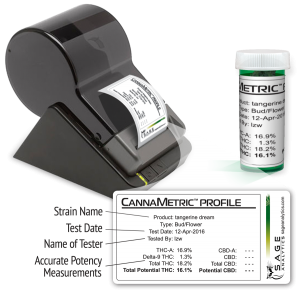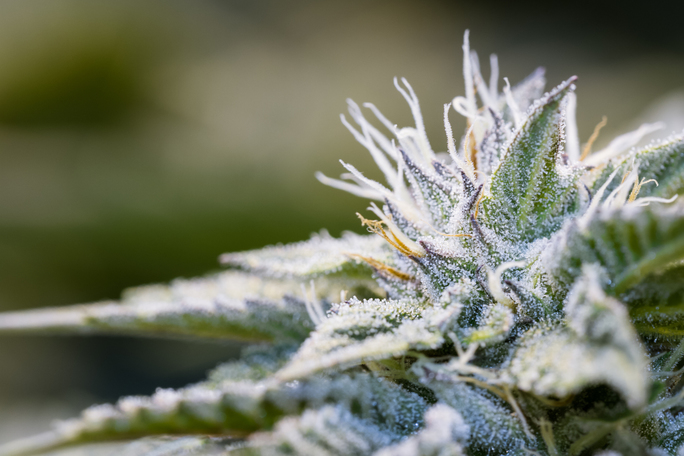To ring in the New Year and celebrate the last Terpenes and Testing magazine will now be releasing editorial articles from futures past. This feature, written by Alex Makowski, Ph.D., was published in ‘The Equipment Issue’ released in May/June 2017.
By Alexander J Makowski, PhD
There is a thorough misconception in the cannabis industry that because of the local level of regulation, that testing either cannot or should not be standardized. Unfortunately, this mentality has led to an atmosphere of doubt, uncertainty, and even chaos as a myriad of regulations and certifications that leave patients, recreational users, concerned moms, and even some producers baffled. Perpetuating this misconception is the arguably dangerous and erroneous belief that the legalization status of cannabis should have any bearing on the way cannabis is produced or tested. Looking back to the sage wisdom of John MacKay in the very first issue of Terpenes and Testing, the best solution is clear.
As an industry, we must leverage the time-tested national and international testing standards for production and quality control for both food and pharmaceuticals. Contrary to current fears, the international standards organizations overseeing the safe production of food and pharmaceuticals (FDA, USP, EP, ISO) have already painstakingly produced and validated safe methods for quality control that are independent of the products being made. Therefore, these methods could be used on cannabis flower and extract without a real need for adaptation.
Sage Analytics was founded on the idea of bringing these tried and true principles of quality control and analytical testing into the cannabis industry. Leveraging 17 years of experience in design, customization, and automation of analytical testing for highly regulated FDA manufacturing environments with our parent company Prozess Technologie, we created the Sage Beacon and Luminary for accurate and precise in-house potency analysis. To this end, we were able to pre-program the chemometric techniques we supply to household pharmaceutical brands for cannabis flower and extract, packing the science inside our plug- and- play touchscreen interface devices. Thus, you receive testing within seconds with no cost and downtime in production.
Before our qualified analytical chemists raise their collective voices in objection, our devices are not designed as a replacement for chromatography techniques, liquid (LC) or gas (GC). In fact, we build our chemometric models off of the HPLC results from ISO certified labs. Each instrument has its place in the production environment and third-party certification, so let’s discuss.
Development
Recognizing a gap in the cannabis industry for process analytics and in-house analytics, Sage partnered with the only legal research for cannabis early in the legalization process. The University of Mississippi or affectionately “Ole Miss” held the sole legal contract for cannabis research on a federal level since 1968. Sage partnered with Dr. ElSohly and his research team, ultimately proving that spectral intensity correlated to verified potency among locally grown and also federally seized samples. We also learned that because of the natural variance in the plant strains and a large number of significant chemical components in cannabis, that near-infrared (NIR) spectroscopy would be best for the non-destructive measurement of cannabis.
How it Works
Sage Analytics instruments use light-based spectroscopy to provide non-destructive real-time measurements of potency. This reliable and time-proven technology has been used for decades in the testing and quality control of FDA approved food and pharmaceuticals. Spectroscopy is the study of the interaction between radiation and matter. Specifically, optical spectroscopy or light-based spectroscopy uses lower intensity sources below the threshold necessary to change the cannabis being measured (minimal heating, photobleaching etc.). The Luminary Beacon and Profiler use near-infrared spectroscopy (beyond visible colors) to measure the chemical fingerprint region of the spectrum associated with THC and CBD.
Every time light interacts with matter, light is either absorbed or scattered, depending upon the properties of the light and the matter. Simplifying the physics, when there is a match between the energy of the light (corresponding to wavelength or color) and the energy of the chemical bond in the material, the light is often absorbed. Therefore, if you measure the difference between a known profile of light input (like a reliable laser or lamp) and the spectrum of light that gets scattered back to a camera, you can determine the type and quantity of chemical components in the test material, like a fingerprint. This is the theory underlying absorption-based light spectroscopy.
Of course, in reality, there are several significant hurdles. This is why we apply our expertise in instrumentation and multivariate chemometric modeling to comprehensively measure the spectral profile of potency directly from vibrations in the chemical bonds of THC and CBD. To build this model, we established a calibration curve from hundreds of samples with varying potency and characteristics. Rather than provide users with instrument and a comprehensive modeling software package, as is often done in the pharmaceutical industry, we built the science of the cannabis potency models into the software to relieve the producers of this scientific burden. Then we simplified the instrument to make it function as a precision sensor for potency with an easily understandable output.
Validation
In science, many know the phrase “if it’s not published, it never happened”. As scientists, we value the need to have our work reviewed by peers for accuracy, especially when the goal is the safety and security of those around us. The lesser-known counterpart to this phrase is “if it’s not validated, it’s meaningless”. Perhaps more important, the need to produce repeatable and reliable results is arguable the most meaningful aspect of any science. If someone else cannot follow your work or use it effectively, it is not as helpful to our advancement as the human race. Taken to its extreme, the best work in science is the kind that can benefit many, cause the most good, or be used by the most people. That why we strive to make instruments that can be operated and understood by anyone in the cannabis production and processing environment. We have also worked with several test labs who were willing to conduct independent third party cross-validation of our devices.
Benefits of In-House Testing
Major agricultural, food production and pharmaceutical companies do not wait days for results on their products before moving through to mixing packaging and the shipping. Instead, they test in-house and have their results the third-party verified. In most major pharmaceutical corporations, there is an engineering department called (Process Analytical Technologies (PAT). Using automated inline equipment, every aspect of the process is measured remotely in real time to ensure optimal performance.

In fact, testing should be your friend, not a requirement that feels oppositional or even oppressive. Imagine opening your favorite snack and finding that it tasted entirely different, not bad necessarily, but different. You would almost certainly throw it away, assuming it was bad. There would also likely be a period of time when you no longer reached for that product on the shelf. It may not have failed safety tests, but it did not meet your standards.
So how do we judge a cannabis product today? (Hint: This magazine is aptly named.) Product consistency is the key to consumer confidence and safety. As scientists, we want to focus on the facts, but there is no reason why the testing for safety shouldn’t be seen as a boon to business. Proper dosing of infused products is key for client security and safety, but we should also see it as an avenue for celebrating our dedication to optimal production quality. In fact, this idea is rooted in the history of American manufacturing. Most of the first trademarked brands in America were in fact about touting consistency. In 1870 Rockefeller named his company Standard Oil, in an attempt to breed confidence that their products were exactly what you would expect [Wikipedia “Standard Oil”; Robert Gordon “the rise and fall of American Growth”]. This attitude of “no surprises” is exactly what the cannabis industry needs now.
Depending on the business needs, in-house testing can be beneficial for any of a number of internal studies to improve the process and offer suppliers and consumers greater confidence in the production. Dispensaries have employed the Beacon at the point of sale, allowing consumers to test exactly when they purchase, providing a confidence-building buying experience for connoisseurs, but this is only the tip of the iceberg as to how in-house testing can be employed. The same dispensaries use the instrument in the back of the house to track supplier consistency and tag product with results from that exact product, instead of a similar batch.
Growers choose strains to produce, pick among parent plants, and time harvests based on potency. They also use potency output to evaluate the efficacy of new equipment on their yield, including light filters, soil formulations, fertilizers, and temperature control. They then tag bags of outgoing product with labels from 5-10 tests results from different buds to show the consistency of a product. Extractors and infused products manufacturers may have the most to gain. They can not only check their supply chain consistency to choose suppliers, but they can also mix and match incoming product potencies to ensure a consistent extraction.
Looking back to “B.E.S.T.” Extractions (Terpenes and Testing Jan/Feb p.30), we know that if we control the input of the extraction, we can rely upon a formulation that matches our profile and expect a consistent output. This kind of data allows for Quality by Design (QbD). Testing batches after extraction allow fine tuning of the formulation and the temperatures, pressures, and flows within the process. Achieving this level of control in the process leads to reliable yield and product potency, ultimately a key to a well-branded product. (Think Standard “Oil”, and for those of you convinced, Sorry, the name is already taken by one of my favorite Sage clients). Finally, once this data is tuned you can dose appropriately into reliable edibles by weight and volume of product.
The purpose of our Luminary products is to put the power of testing in the hands of the producer. Luminary is not and should not be considered a replacement for precision and accuracy or chromatography, but critical decisions can be made in the process that help control consistency even at a slight cost in accuracy. In the same way that Prozess Technologie has helped world leaders in pharmaceutical food and beverage manufacturers to optimize efficiency, consistency, and safety for over 17 years, Sage Analytics strives to achieve process optimization in the cannabis industry as well.
With our technology and others, we can make formal testing confirmatory and not exploratory. For this reason, The Luminary Profiler and Beacon print CannaMetric™ labels with their real-time results. Not only for tagging product for final sale, you can use this to sort and mix incoming material for streamlined consistent extraction to minimize system fluctuations. It’s not about the cost efficiency, savings on your testing budget, or even the ease of use. It’s about ensuring and demonstrating the quality of your process and subsequently the quality of the final product.
Remember Standard Oil… this is what makes a brand into an empire. To paraphrase Al Capone, “test early, and test often”.








